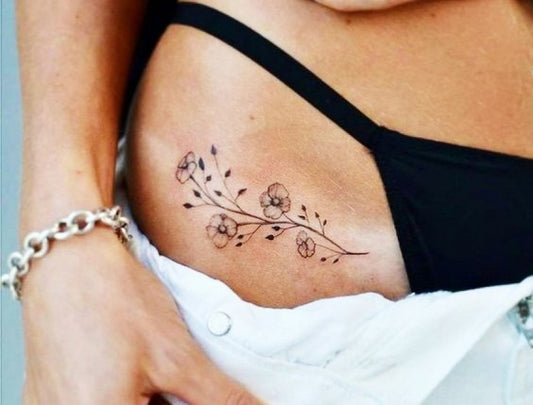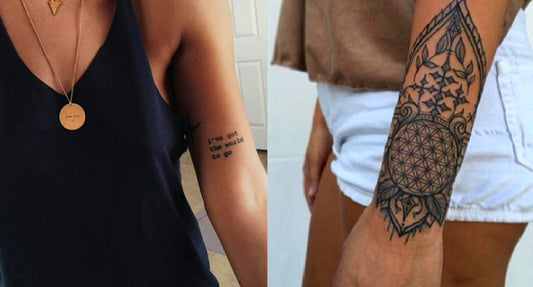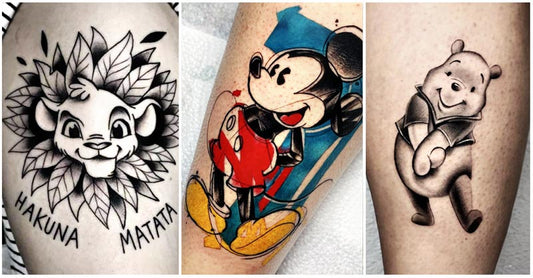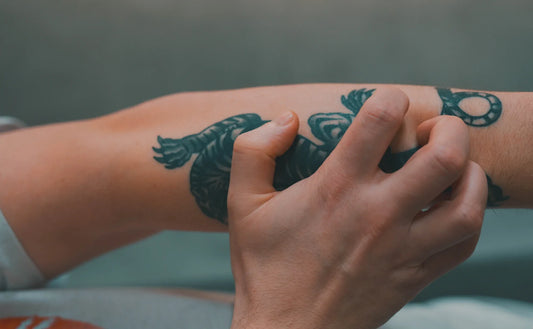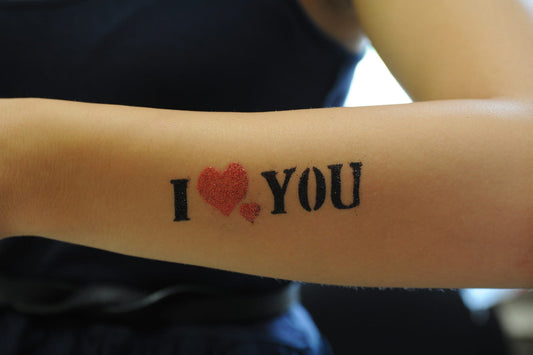
Tattoo Infection: Everything You Need To Know
One of the biggest concerns about getting a tattoo is the possibility of it getting infected. Here's ......
One of the most common adverse effects of tattooing is superficial skin damage and tattoo infection. As more and more people turn to body art, the number of cases with infection outcomes has increased drastically. The reason for this being improper tattoo practices and untrained tattoo artists conducting work in non-sterile environments.
Since tattooing is an invasive procedure that opens your skin, a layer protecting the rest of your body and organs, skin and blood infections aren’t a surprising outcome. However, it is all fun and games until you have to deal with a medical professional and get tested for viruses like hepatitis B, hepatitis C, HIV, or bacteria like Staphylococcus.
So, if you’re about to get a tattoo and want to be informed of the possible adverse effects, you’re at the right place. In the following paragraphs, we’ll take a deep dive into the world of tattoo skin and blood infections. So, without further ado, let’s get started!
Tattoo Infections: The Risk Of Infection Explained
Tattoos and Pathogens
To understand why tattoo infections occur, it is essential to understand the potential sources of infections when it comes to tattooing.
Now, our bodies are protected from various bacteria, viruses, and pathogens in general by our largest organ, which is the skin. During the tattooing process, the skin is repeatedly ad intensely pierced to have the ink placed in the dermis of the skin. In the process, the holes created by the tattoo needle create an open wound, which further creates an entranceway for pathogens.
So, when the pathogens enter the skin, they move into the est of the body via the bloodstream or remain located in the freshly tattooed area. As a result, people experience skin and blood infections.
But, why are pathogens even a part of the whole tattooing process? Isn’t everything supposed to be sterile, clean, and safe? Well, in the majority of cases, when we talk about professionals and reputable tattoo salons, the equipment, and the environment is sterile and clean. But, there is always the other side of the coin.
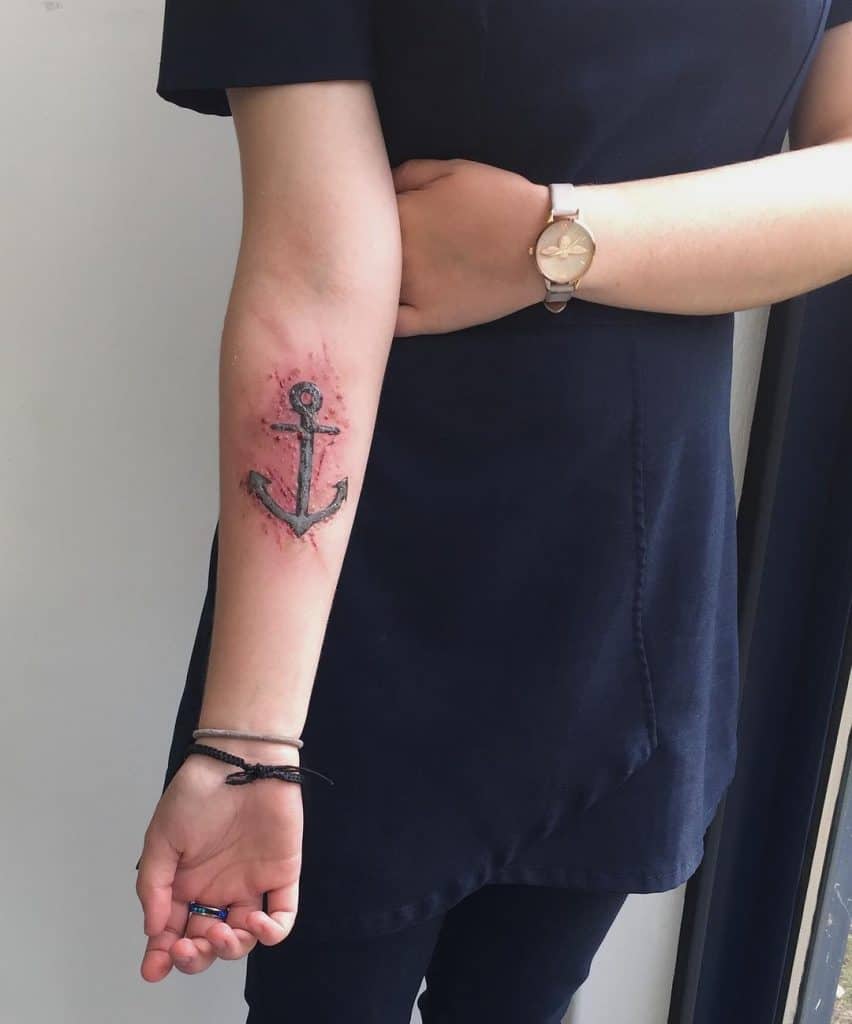
The Source of Pathogens and Infections
So, why do pathogens, viruses, and bacteria, even have the option to enter our skin and body during tattooing? Well, it can be truly hard to control occurrences like viruses and bacteria. It is essential for tattooists and tattoo salons to keep everything sterile, disinfected, and squeaky clean. But, the sources of viruses and bacteria can be numerous different things. That is why virus and bacteria transfer during and after tattooing is clearly defined and separated, depending on the potential pathogen source;
- Pathogen transfer from contaminated equipment– if the needle piercing the body is contaminated, as it was already used on someone else or exposed to pathogens in another way, chances are the pathogens will enter the skin and the bloodstream during tattooing.
- Pathogens transfer from the contaminated environment– if the tattooing equipment is laying around on unclean work surface and generally unclean, contaminated environment, then they will also become contaminated and introduce the pathogens to the client during tattooing.
- Pathogens transfer from the client’s skin– sometimes, people carry viruses and bacteria on their skin. However, nothing happens because these pathogens don’t have a way to enter the body. But, tattooing enables the pathogens to enter the body as the needle creates holes in the skin. The pathogens generally enter using the tattoo needle as a transport.
- Pathogens transfer from other, contaminated clients– sometimes, infected clients come to a tattoo shop to get a tattoo. Their blood contaminates, for example, the tattoo machine and the tattoo bed/chair. Because it is not visible, this blood can spread around and contaminate other instruments and surfaces in the tattoo shop.
So, now that we know what the possible source of pathogen transfer is, let’s summarize by taking a look at when exactly these microorganisms transfer from one item to the other;
- Contamination occurs when the tattooists don’t observe hygiene protocols
- It also occurs when tattooists share the same equipment on different clients, even when they sterilize them
- Microorganisms spread when clean and used instruments come in contact
- They also spread when sterile instruments are placed on contaminated surfaces, and vice versa
- Contamination also occurs when single-use gloves, dressings, and other equipment is not disposed of immediately after use
Note: The contamination can also occur from the tattoo ink. Recent studies have shown that approximately 10% of all tattoo inks were already contaminated with bacteria that are pathogenic to humans. These inks are generally labeled as ‘sterile’ when in fact they are not safe and reliable. There are cases where aggressive strains of Escherichia coli have been found in tattoo inks as well.
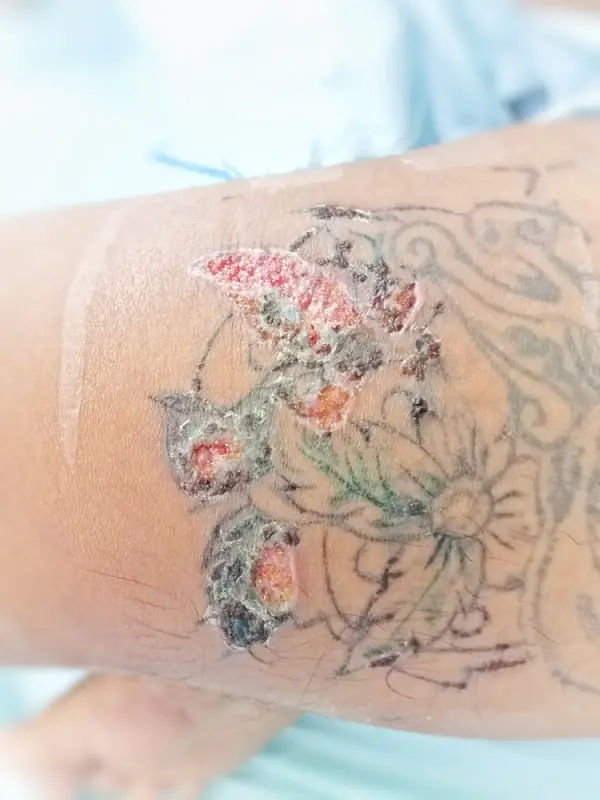
Which Pathogens Cause Infections? – The Viruses and Bacteria Causing Infections
As we mentioned, a range of infections can occur from contaminated surfaces, equipment, and even the client’s own skin. But, what kinds of infections do bacteria and viruses cause as a result of tattooing complications?
When it comes to bacterial infections, we’re talking about the following bacteria;
- Staphylococcus (MRSA)
- Streptococcus
- Pseudomonas
- Clostridium species
- Tetanus
- Tuberculosis
- Leprosy
On the other hand, when it comes to viral infections, the problem is usually caused by one of the following viruses;
- Hepatitis B
- Hepatitis C
- Human Immunodeficiency Virus or HIV
- Herpes
- Warts, molluscum, and condylomata (viruses causing local infections)
According to the CDC, tattooing is reported as the source of infections and outbreaks of diseases, most commonly hepatitis B, hepatitis C, and warts. The reason there is such a high prevalence of hepatitis B and C cases in tattooing environments and practices lies in the fact that these viruses require only a small inoculum (pathogen for initial contact) to infect a person.
Fortunately, there hasn’t been a high number of cases of bacterial infections, although the precise data is still lacking. Generally, it is presumed that the immune system can fight off the majority of bacteria and viruses, but people with impaired immune systems and especially vulnerable in case of direct exposure.
The Symptoms and Results of Infections
When it comes to symptoms of tattoo infections, things are pretty straightforward. The symptoms include;
- Continuous tattoo oozing and bleeding that doesn’t cease in the first 24 hours
- Development of a rash, redness, soreness, and bumps in the tattooed area
- Tattoo drainage and inability to dry out
- Development of fever and general poor condition
- Experience of chills, shaking, and sweats
- Increasing pain in the tattooed area
- The worsening of the swelling and drainage
In the majority of cases, infections remain superficial and only affect the tattooed skin. In serious infection cases, one may require immediate medical attention and even surgical incision to remove the infection and prevent it from spreading. Profound infections may appear in the form of swelling of an entire limb.
There are cases where skin infection, unfortunately, becomes the infection of the blood. Bacteria may pass from the tattoo into the bloodstream and move across the body. As a result, there can occur sepsis, high fever, impairment of vital organs, and even death. All of this can be luckily prevented by proper medical attention and antibiotic treatment.
When it comes to mycobacterial infection, it is important to be especially cautious and aware of the symptoms and results. This type of infection develops slowly. It is generally sourced from contaminated tap water used to dilute ink for tattooing. Mycobacterial infections are rare and can only be discovered via special diagnostic sampling.
Different Cases of Tattoo Infections
It is important to mention that tattoo infections vary from the tattoo style and tattoo location. If a tattoo is located somewhere with high moisture levels, like the armpit area or the lip, the higher are the chances of prolonged healing issues and possible infection.
In such cases there doesn’t even have to be an initial contact with pathogens during the tattooing; the fact that the moisture is ever-present alone makes it difficult for the tattoo to dry out and heal. And, moisture, especially sweat, is known to attract germs and bacteria, and help them grow and develop.
There are cases where the type of tattoo or even the execution can lead to an infection. For example, stick-and-poke tattoos are known to cause infections due to the more outdated method of tattooing (with only the needle).
Because stick-and-poke tattoos can be DIY-ed, people use improper and dirty tools, like pen ink for example. As a result, inflammation and infection occur.
Note: It is also important to mention that laser tattoo removal procedures can also lead to infections. The infections often occur as a result of an allergic reaction, or as a result of improper aftercare upon the procedure completion.
In many cases, the treated area starts to blister heavily, and people avoid cleaning and disinfecting it. As a result, the area becomes inflamed, infected and instead of clean skin, people end up with scars.

Tattoo Infection During the Healing Process
It is less common knowledge that a tattoo can get infected even after it’s done. Microorganisms can find their way into the body through the tattoo so long it is in the healing phase. As you may know, a fresh tattoo is an open wound that takes time (up to 7 days) to completely close and move towards healing (forming of new skin layers and drying out).
That is why it is important to stay away from potentially infected surroundings and situations. For example;
- While the tattoo is healing, you should not allow your pets to sleep in the same bed as you; germs and bacteria from your pet can easily find their way to your healing tattoo and cause an infection.
- If the tattoo is not cleaned after it has stopped oozing and bleeding, it can result in inflammation and infection due to excess moisture.
- If the tattoo is covered in lotion and Vaselinewhile it’s healing, the product can clog the tattoo, prevent it from breathing and drying out. As a result, the trapped moisture can cause inflammation and infection.
- If you don’t wear loose clothes while the tattoo is healing, the material can stick to the tattoo and transfer potential germs and bacteria into the wound. As a result, you will have to unstick the material from the tattoo, potentially reopen the wound, and risk infection.
Tattoo Infection Treatment
In case of mild tattoo infections, like bumps and rashes, they are pretty easy to manage at home. By using some antibacterial ointment, proper cleaning of the tattoo, and proper diet you can ensure that your immune system will fight the infection on its own.
However, if the infection is serious, and it’s causing serious symptoms, like swelling, drainage, fever, and increasing pain, then it is time to visit a doctor. Medical attention in such cases is CRUCIAL. Your doctor needs to establish the cause of the infection and then prescribe proper treatment.
In the majority of cases, the infection can be managed by antibiotics which can be used for a few weeks to a few months; this depends on the severity of the infection, of course.
In case of a bacterial infection, especially MRSA, antibiotics won’t help. Such bacterial infection usually manifests in form of an abscess. So, the treatment usually involves abscess treatment (drainage), rather than the actual treatment of the infection cause.
Unfortunately, in severe infection cases, there might a need for surgical intervention as well. In such cases, the doctor will cut out the infected flesh and tissue to prevent it from affecting the healthy tissue and spreading across the body.
Tattoo Infection Prevention Measures
We know that after all this information, it would be hard to go and get a tattoo without the fear of things going the wrong way. However, even though tattoo infections are a thing, they’re pretty easy to avoid and prevent. Here’s how you as a client or as a tattoo artist can prevent a tattoo infection;
As a client
- Make sure to come to your tattoo appointment freshly showered and shaved
- Avoid touching the tattoo without cleaning and disinfecting your hands first
- Follow the proper aftercare routine
- Do not wash or apply lotion to your tattoo the first 24 to 48 hours
- Do not sleep with your pets in the same bed
- Try to wear loose clothes
- Avoid swimming and sweat-inducing activities
- Do not use petroleum-based products like Vaseline
- Only get tattooed at licensed, reputable tattoo salons
- Check whether your tattoo artist follows safety procedures (uses sterilized, new needles, cleaned equipment, cleans the bed/chair, replaces gloves and wears them all the time, etc.)
As a tattoo artist
- Only buy proper equipment, from reputable sources (especially the ink)
- Provide disinfected and cleaned client-specific zones at the tattoo salon
- Use only cleaned and sterilized equipment
- Use new and sterilized tattoo needles
- Do not share equipment with other tattooists
- Beware of the area where you place and store your equipment; make sure that area is also clean and disinfected
- Always wear gloveswhen working with a client (nitrile gloves preferably)
- Bear in mind that latex gloves can cause an allergic reaction in some clients
- Make sure to have proper storage containers with lids
- Make sure to have clean linen or disposable towels for client protection
- Make sure to provide clean and sterilized tattoo wrapping materials
These are just some of the infection prevention measures clients and tattooists should follow. The tattoo artists have strict contamination prevention measures to follow which include detailed instructions regarding cleaning, disinfection, and handling of contaminated or blood-stained equipment.
Final Thoughts
The risk of a tattoo infection is always present, there is no doubt about that. But, by choosing the right tattoo artist, and by following the protocols as a tattooist, you can prevent the infection from occurring. It is generally safe to get a tattoo, so you should not avoid getting inked because of this risk.
Generally, make sure you eat well, drink plenty of water, and focus on boosting your immune system. This way, even if you do get exposed to germs, bacteria, and viruses, your immune system will be able to fight them off. And, simply think before you ink and get inked; choose wisely and go for proper and reputable professionals.





